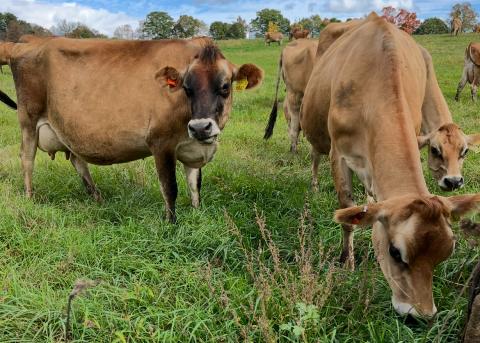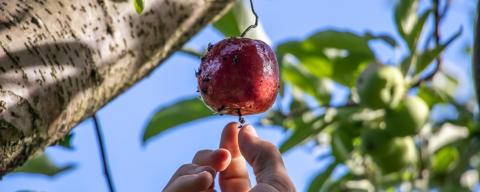Beating Summer Heat Stress in Dairy Cows
As summer temperatures rise, so does the risk of heat stress in dairy cattle. Cows that are heat stressed are less productive, costing you money over the summer. This article will cover what heat stress is, signs to look out for, the effects it has on dairy cattle, and some practical options for preventing it.
Heat Stress
Dairy cattle are homeothermic, which means they are generally able to keep their body temperature stable. However, during times of extreme heat index, cows, particularly lactating Holsteins, may experience heat stress. Heat stress occurs when a cow absorbs more heat than its body can handle. This typically occurs when a cow’s internal body temperature exceeds the normal range of 100°F to103°F.
Signs to Watch out for and why it’s Harmful
Heat stress can appear in dairy cattle as:
- Increased heart rate
- Heavier breathing/panting
- Higher body temperature
- Increased water intake
- Reduced feed intake
- Reduced milk yield
- Standing more rather than lying down (to regulate body temperature)
- Reduced Rumination
- Lethargy
- Crowding in shade or around water sources
A dairy cow’s body systems cannot function properly, or as well as they should, when their internal temperature is higher than what is considered normal. If left unmanaged, heat stress can reduce fertility, reproductive performance, milk production, and cause immune suppression leading to a greater chance of contracting disease.
Prevention
1. Ensure Access to Clean Water.
A dairy cow drinks around 20-35 gallons of water a day. Under heat-stress, that number will rise. Not only is it important that they always have access to water, but it also needs to be clean, fresh water. Water troughs should be cleaned frequently, especially because more bacteria is apt to grow in warmer conditions.
2. Provide Adequate Shade.
Cows on pasture should have plenty of shade to stand in for when the heat gets to be too much. Trees are a popular and easy way to provide shade, but man-made structures are also a great option.
3. Ensure Proper Ventilation.
Proper air flow is essential for cows housed inside. This means open doors and open windows to allow for as much airflow as possible. The use of fans over stalls, feed alleys, and in the holding pen is a great way to help reduce heat stress. To get the most out of your fans, make sure fans are mounted correctly and properly maintained. Sprinklers and misters can also be combined with fans to cool cows through evaporative cooling. If you are using sprinklers, make sure to cycle the water on and off to allow the water to evaporate and prevent excessive moisture that can promote mastitis.
4. Adjust Feeding Practices.
When cows are hot, they will want to eat less. Because of this, it is essential that cows have access to feed all day everyday. It is also good practice to push up feed throughout the day to encourage the cows to continue eating.
In Summary
The summer heat can be harmful to dairy cows and their milk production. To prevent heat stress, it is always best to make sure clean water, ample shade, proper ventilation, and feed are readily available to dairy cows. With these preventative measures, your cows will be less likely to experience heat stress and have a happier, healthier summer!
References:
Heat Stress in Dairy Cows: Impacts, Identification, and Mitigation Strategies—A Review, 17 January 2025, https://pmc.ncbi.nlm.nih.gov/articles/PMC11758294/. Accessed 16 June 2025.
“Heat Stress Reminders: Warm Weather is Here.” Penn State Extension, 28 April 2023, https://extension.psu.edu/heat-stress-reminders-warm-weather-is-here. Accessed 24 June 2025.
Roth, Zvi. Influence of heat stress on reproduction in dairy cows—physiological and practical aspects, 18 August 2020, https://pmc.ncbi.nlm.nih.gov/articles/PMC7433908/. Accessed 16 June 2025.
Extension Services & Tools That Help NH Farmers Grow
Newsletters: Choose from our many newsletters for production agriculture
Receive Pest Text Alerts - Text UNHIPM to (866) 645-7010



